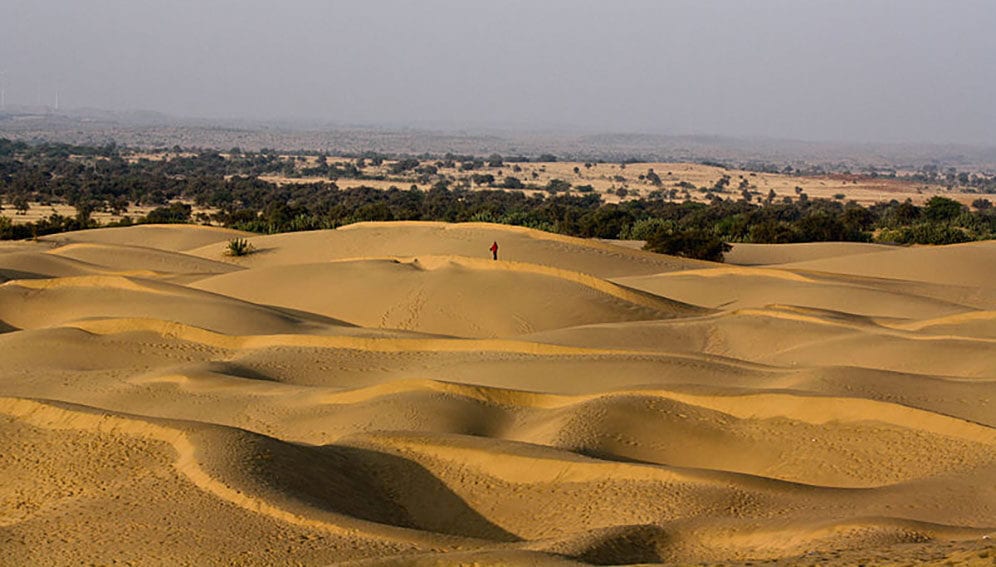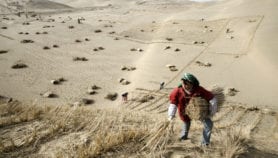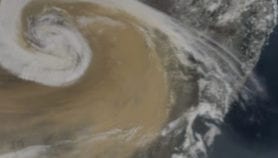03/09/19
CoP14 on desertification tackles ‘land-drought nexus’

发送to a friend
您在此页面上提供的详细信息将不会用于发送未经请求的电子邮件,也不会出售给第三方。请参阅隐私政策。
[新德里]与天气有关的disasterssuch as droughts, forest fires, flash floods and soil loss form the background for the14thConference of the Parties (CoP14)的联合国打击荒漠化的公约(UNCCD)本月(9月2日至13日)在印度首都新德里。
公约执行秘书易卜拉欣·蒂亚(Ibrahim Thiaw)在周一(9月2日)的开幕式上提醒代表,尽管最近不利的天气事件和科学评估表现出严峻的情况,但还有变化和行动的机会。
“年龄nda shows that governments have come to CoP14 ready to find solutions to many difficult, knotty and emerging policy issues”
易卜拉欣·蒂亚(Ibrahim Thiaw),《联合国打击荒漠化的公约》
Among key scientific assessments expected to inform CoP14 is theSpecial Report on Climate Change and Landreleased by theUN Intergovernmental Panel on Climate Change8月,这强调了人类行动带来的土地压力的日益增加气候变化。
“While the science and events around us must get our full attention, we should never, ever lose sight of the inspiring moments or opportunities opening up or are happening around us that we can build on to break vicious cycles, trends or behaviour,” Thiaw said. “This is what will move us forward.”
Starting Tuesday (3 September), delegates work through 30 decision texts, with the negotiations on dealing with drought and land tenure slated to take priority.
The New Delhi meet includes the 14thsession of the UNCCD’s Committee on Science and Technology (CST14). It will consider three major technical reports newly published by the Science-Policy Interface (SPI) with clear objectives.
The first SPI report contains guidelines for the estimation of soil organic carbon in the context of land degradation neutrality planning and monitoring. The report follows on the realisation that there are carbon benefits to the implementation ofsustainable土地管理。
According to Thiaw, the first SPI report aims to create an enabling environment for land degradation neutrality (LDN) and its potential contribution to enhancing the livelihoods and well-being of people and of thebeplay足球体育的微博。
第二个地址“land-drought SPI报告nexus’ and is designed to enhance the role of land-based interventions in drought mitigation andrisk management。它可以将当前科学转化为policy与《公约》 197缔约方相关的期权。
印度环境部长Prakash Javadekarbeplay足球体育的微博forestSPI报告说,气候变化将确保“在接下来的两周内为关键政策决策做出强大的科学基础”。
Javadekar took over the presidency of the CoP from China’s minister of state for forestry and grassland administration Zhang Jianlong for a two-year term. At a plenary following the inauguration, Javadekar said only “strong human intent and intellect combined withtechnology” could halt the acceleration of climate change, land degradation and生物多样性loss caused by human action.
Noting that some of the world’s most populous countries, starting with China and India, have presented voluntary LDN targets, Javadekar called for further international commitment to find new ways, including sustainable development methods and technology, to restore degraded land.
Javadekar said 122 countries, including Brazil, China, India, Nigeria, Russia and South Africa “have agreed to make the可持续发展目标实现土地退化中立的国家目标”。
On the agenda of CoP14 are the following: land tenure, drought management consumption and production flows influencingbeplay下载官网西西软件以及城市化将消耗亚洲和非洲最有效的农业土地的80%,生态系统恢复和基于自然的解决方案以抵抗气候变化。贾瓦德卡(Javadekar)表示,如果会议可以就其最棘手的问题(例如处理干旱和土地任期)达成共识,他将认为COP14成功的量度。
An estimated 7,200 participants including 90 ministers as well as other representatives of governments, non-government and intergovernmental organisations, scientists,women预计197个政党的青年将参与对土地利用政策和新兴问题(例如强迫)的30项决定migration,沙尘暴和干旱。
“年龄nda shows that governments have come to CoP14 ready to find solutions to many difficult, knotty and emerging policy issues,” said Thiaw. “More than 70 countries already have robust national drought plans, compared to just three countries only four years ago.”
This piece was produced by SciDev.Net’s Asia & Pacific desk.
More on Desert science
News
气候变化can dry south Indian river, says new study
[NEW DELHI] Climate change could lead to huge01/08/11
News
South Asia News in brief: 1–15 March 2008
Below is a round-up of news from or about South Asia for the period1–15 March。20/03/08
News
Soil degradation issues ‘swept aside’, say experts
Soil scientists have called for more targeted research and strict guidelines to stop what they say is the m ...
07/09/07
News
UN: Policymakers must rethink desertification
[BEIJING] A new policy report from the United Nations University (UNU) urges governments to adopt a more co ...
28/06/07
News
伊斯兰基金为在尼日尔提供食物而创建
A group of Islamic states have approved a five-year US$370 million fund to help combat desertification and ...
19/06/07
News
Local people ‘vital to preventing desertification’
将当地人民的生计整合到环境管理中可以帮助防止荒漠。beplay足球体育的微博
14/05/07
News
Forced migration key issue at desert meeting
Desertification could create more than 135 million refugees, as droughts become more frequent and climate c ...
15/12/06





